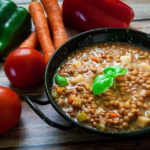What is emotional hunger?
Emotions
To talk about emotional hunger, it is important to clarify what emotions are, what we mean by the emotional concept.
We can define emotions as psychophysiological responses (i.e. of the mind and body) of individuals to internal stimuli (from the person’s own experiences) or external stimuli (from what happens in the environment) and that have influence at different levels in people. Thus, we can say that there are no good and bad emotions, but that all of them are a source of information about things that are happening inside or outside us.
For example, fear warns us of a threat and leads us to protect ourselves, anger informs us of an injustice and prepares us for action, or joy accompanies us when we experience a gain and invites us to share. We may experience some of them as pleasant or unpleasant, but their function is initially adaptive, i.e. useful to us.
We point out “in principle” because sometimes emotions may appear disproportionate to the stimulus that causes them (as happens with fear in phobias), but this is another topic and in this post we will focus on talking about the relationship between emotions and food.
Emotions and food
Food can be linked to our emotions in different ways, let’s see some of them:
Since we are children an emotional relationship with food is established, since in the first months and years of life the main source of nutrition comes from the primary caregiver or caregivers. Thus, when we receive the food offered by these people, a relationship of care and protection is established with the food. As we grow up there are also other sources of social influence where food takes on an emotional role, for example, it is common to share food at social celebrations (birthdays, holidays, etc.). We also find the function of food as a “gift”, to show affection or affection for example when someone gives a box of chocolates or invites another person to dinner at a restaurant.
Hunger, emotions and brain
On the other hand, some foods are made up of certain compounds that influence the brain. These substances activate certain neural circuits that produce feelings of reward, pleasure and well-being. An example of this can be chocolate, which contains tryptophan and phenylethylamine.
What about flavors? Flavors also have an adaptive function, for example an aversive flavor, which produces disgust, helps us to determine when a food is in bad condition, but learning also has an influence here, as I mentioned a few lines above, for example, we can associate the sweet to a “prize” if it is offered to us as children with that function (“if you behave well I give you a candy”).
Based on this, we can say that emotional eating is something common, which is part of the culture of human beings and does not have to be negative for people. The problem lies when food takes on a major role in the management of emotions. For example, having a piece of cake on a birthday to celebrate, to share or to experience pleasure (even if we do not feel a real physiological hunger) can be positive for our well-being. But always channeling emotional states that are difficult to manage through eating cake may not be so positive for well-being and lead to complications in physical and mental health.
Emotional hunger and food cravings
- Sometimes emotional hunger becomes a problem, leading people who experience it to feel real anxiety about eating.
- Anxiety usually appears as a symptom that something dangerous may happen, it is a warning signal, a sign of anticipation of the situation to be faced. Thus, anxiety has an adaptive function, preparing us for action.
But sometimes anxiety can become “pathological” and be experienced as excessive in relation to the resources we have to manage it. In these cases a high sensation of discomfort is experienced, even at a physical level (sweating, alteration of the cardiac rhythm, etc.). Faced with this, some people find an “escape route” through food, even going so far as to eat compulsively or develop other eating behaviors that are a risk to their health. Thus, food becomes a “patch” of the situation in the short term, to get rid of that feeling for a few moments, but that entails complications in the medium and long term.
How to overcome emotional hunger?
When emotional hunger has become “pathological” and leads to dysfunctional behaviors such as food cravings, binge eating, etc. it is time to consider how we can remedy the situation.
- The first step may be to understand that food is not the focus of the problem, but that it is the “cover”. Giving ourselves permission to observe what we are covering up with food and what the situation wants to tell us can be a good start.
- Pay attention to body sensations to differentiate between physical and emotional hunger; in this sense, practicing conscious eating or mindful eating can be a tool.
- Here are some of the characteristics that can help us differentiate between physical and emotional hunger:
Physical hunger
- It is activated by a physiological need of the organism to cover energy needs.
- It appears gradually, gradually in relation to the energy and nutritional reserves of the organism.
- The sensations of satiety are felt once a sufficient amount of food has been ingested for our organism.
- The sensation is experienced in the stomach.
- Etc.
Emotional hunger
- It is activated by an internal or external stimulus that produces a certain emotion in the person.
- It can appear suddenly, even after feeling satiated by a previous sufficient intake.
- It is difficult to distinguish the sensations of satiety once food has been ingested.
- Sensations can be experienced in other parts of the body.
- Etc.
Once the focus of the problem has been identified, we cannot stop using the “method” we know to alleviate the discomfort (food) without having a new “method” of emotional management, that would be like removing the scaffolding that supports a house without first having built solid pillars. Therefore, it is essential to be able to work on emotional management, to understand our emotions and learn to channel them in a healthy way.













